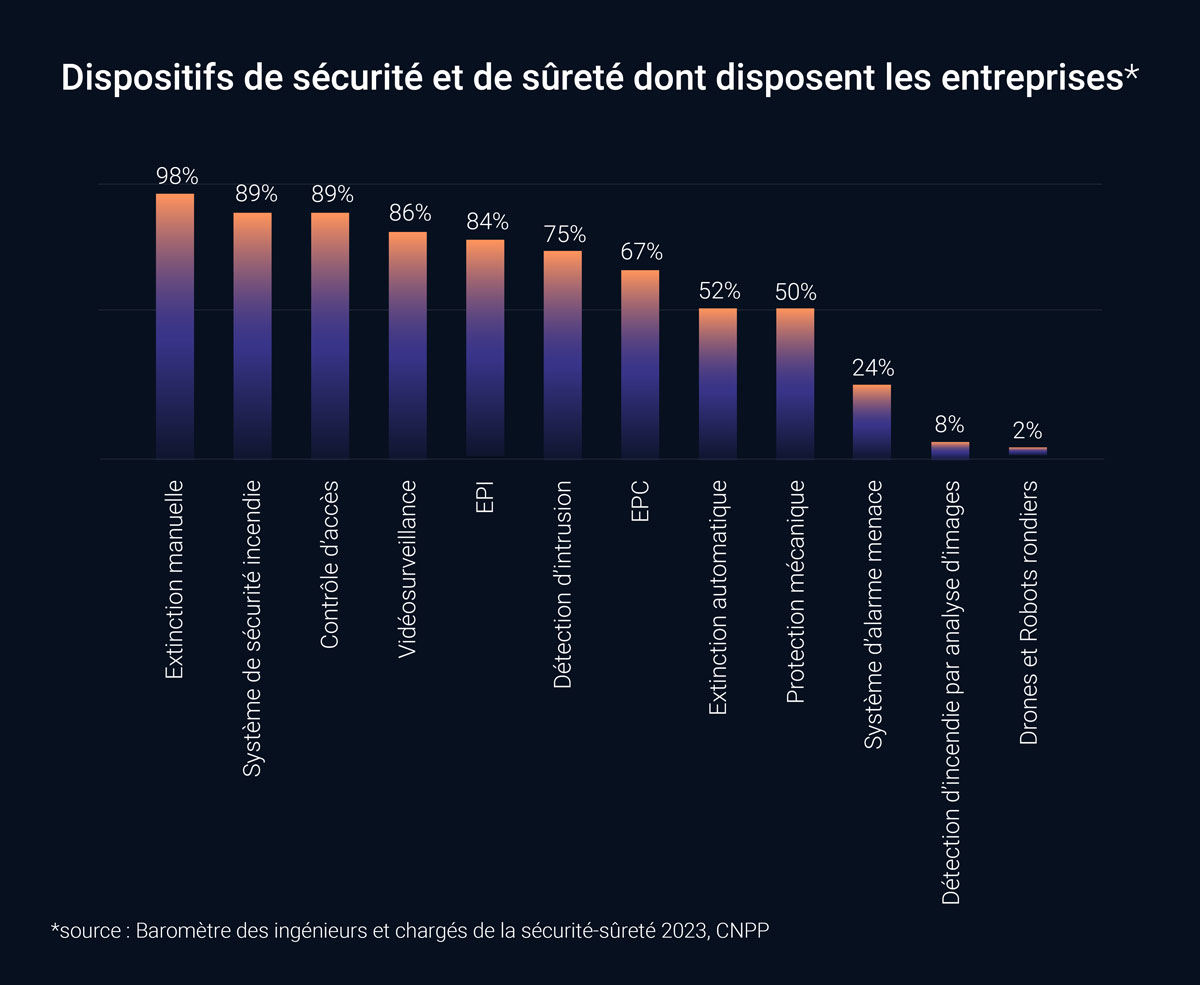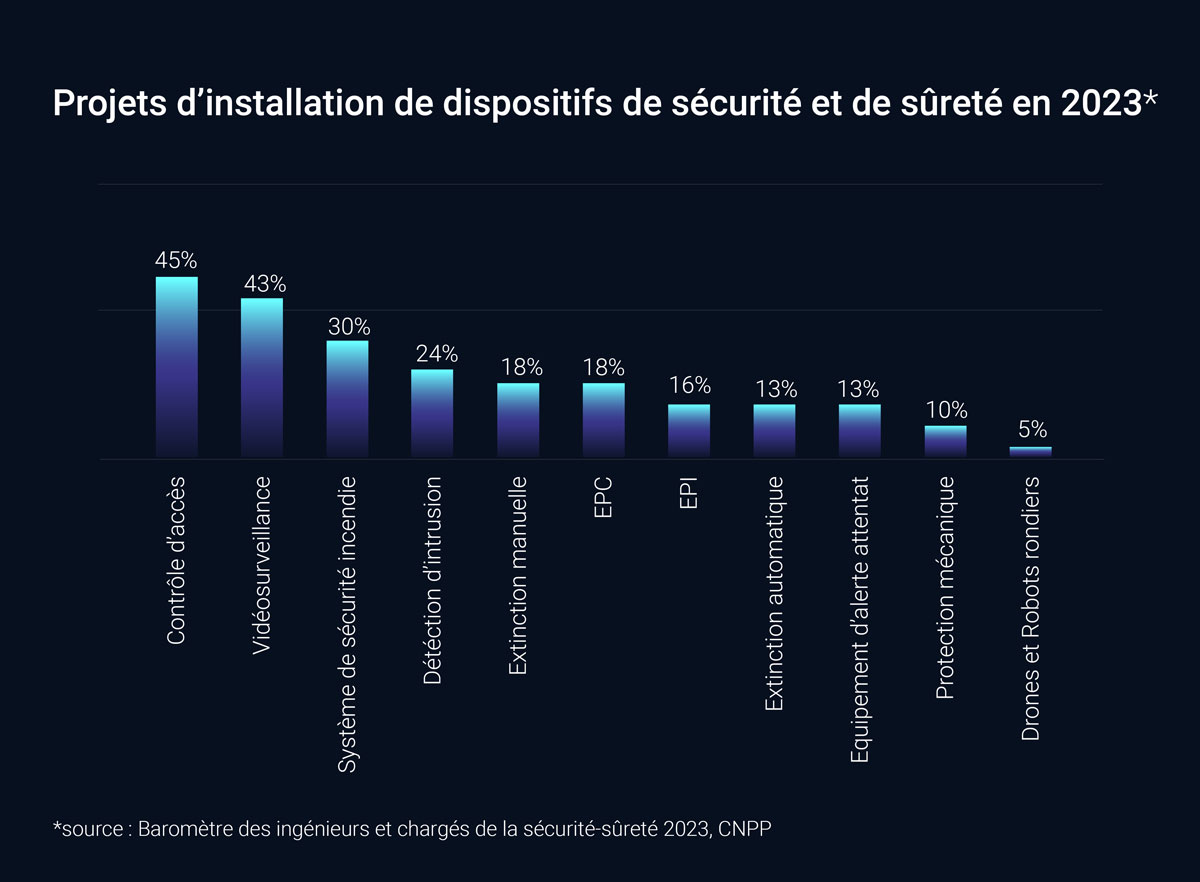There are a multitude of industrial zones. From chemical sites, to wind farms, to storage warehouses, each industrial facility poses distinct safety challenges. Nevertheless, all these sites share the imperative need to guarantee the safety of operations and the protection of workers, infrastructure, and the environment.
While surveillance and inspection systems are evolving, so are the threats… so what are the current issues and the solutions that will define tomorrow’s industrial security landscape?
Oil and gas sites, the epicentres of energy production, are exposed to inherent risks such as gas leaks and fires. Sophisticated detection systems and field teams must be able to react quickly and effectively to minimise potential damage. Indeed, every installation requires extreme vigilance. Inherent risks, such as explosions and leaks, dictate the need for robust security.
Chemical industry laboratories house volatile elements, creating potential hazards. Like Seveso sites, they are subject to strict regulations because of the presence of hazardous substances, requiring particular vigilance. Secure access, continuous monitoring of atmospheric emissions and appropriate staff training are the cornerstones of safety.
Storage warehouses, often essential links in the supply chain, require rigorous security measures to prevent theft, intrusion and incidents involving the handling of goods.
From power stations to recycling centres, the security of these sites extends beyond protection against intrusions. Energy production sites, whether nuclear, thermal or renewable, require increased protection to prevent radiological risks, cyber threats and natural disasters. In the recycling sector, safety focuses on the safe handling of waste, the management of chemical products and the prevention of machinery-related accidents. In both cases, electrical hazards and environmental challenges add further layers to the safety canvas.
With the emergence of renewable energies, solar fields are becoming the sanctuaries of the future. Here, safety must reconcile emerging technologies with infrastructure protection.
At the heart of industry, security and safety requirements are constantly evolving to keep pace with today’s threats. Real-time monitoring, sophisticated risk analysis and rapid response to incidents are becoming the norm.
Today’s challenges can be seen from a number of angles:

Today’s industrial sites are not without their own defences. From video surveillance systems to rapid intervention teams and automatic fire detection systems, each site weaves its own web of protection. Physical patrols and checkpoints also help to maintain a deterrent presence… Unfortunately, it is very difficult to carry out continuous inspection and surveillance missions across an entire site with current resources.
From reactive security, managers are emphasising their desire to integrate systems to ensure more dynamic and predictive security. Technological innovation and development are necessary to achieve their objectives.
To keep pace with emerging threats, the industry must constantly innovate and integrate new technologies. Current safety and security systems, while robust, must evolve to anticipate future scenarios.
Major technological innovations:

In conclusion, industrial safety and security are evolving as fast as the industries they protect. Current and future challenges require a proactive approach, integrating cutting-edge technology and human expertise. As AI and autonomous robots become key players, they only reinforce the essential role of industrial safety professionals in protecting activities that are crucial to our society. A symbiotic alliance between man and machine is taking shape, promising a safer future for global industry.

Head of Marketing & Communication at Running Brains Robotics